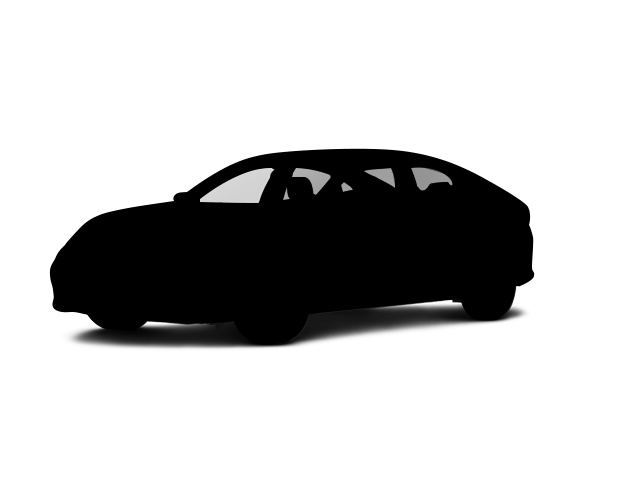The Chevrolet Trax has standard driver and front passenger side knee airbags mounted low on the dashboard. These airbags helps prevent the driver and front passenger from sliding under their seatbelts or the main frontal airbags; this keeps them better positioned during a collision for maximum protection. Knee airbags also help keep the legs from striking the dashboard, preventing knee and leg injuries in the case of a serious frontal collision. The Forester doesn’t offer a front passenger side knee airbag.
Compared to metal, the Trax’s plastic fuel tank can withstand harder, more intrusive impacts without leaking; this decreases the possibility of fire. The Subaru Forester has a metal gas tank.
Both the Trax and the Forester have standard driver and passenger frontal airbags, front side-impact airbags, driver knee airbags, side-impact head airbags, front seatbelt pretensioners, height adjustable front shoulder belts, four-wheel antilock brakes, traction control, electronic stability systems to prevent skidding, daytime running lights, rearview cameras, available all wheel drive, blind spot warning systems, rear parking sensors and rear cross-path warning.
The National Highway Traffic Safety Administration does 35 MPH front crash tests on new vehicles. In this test, results indicate that the Chevrolet Trax is safer than the Subaru Forester:
|
|
Trax |
Forester |
|
|
Driver |
|
| STARS |
5 Stars |
5 Stars |
| HIC |
122 |
186 |
| Neck Stress |
298 lbs. |
326 lbs. |
| Neck Compression |
12 lbs. |
22 lbs. |
|
|
Passenger |
|
| STARS |
5 Stars |
5 Stars |
| HIC |
207 |
293 |
| Chest Compression |
.3 inches |
.7 inches |
| Neck Stress |
122 lbs. |
213 lbs. |
New test not comparable to pre-2011 test results. More stars = Better. Lower test results = Better.
The National Highway Traffic Safety Administration does side impact tests on new vehicles. In this test, which crashes the vehicle into a flat barrier at 38.5 MPH and into a post at 20 MPH, results indicate that the Chevrolet Trax is safer than the Subaru Forester:
|
|
Trax |
Forester |
|
|
Front Seat |
|
| STARS |
5 Stars |
5 Stars |
| Abdominal Force |
120 lbs. |
122 lbs. |
| Hip Force |
388 lbs. |
389 lbs. |
|
|
Rear Seat |
|
| STARS |
5 Stars |
5 Stars |
| HIC |
100 |
246 |
| Spine Acceleration |
33 G’s |
56 G’s |
|
|
Into Pole |
|
| STARS |
5 Stars |
5 Stars |
| Max Damage Depth |
14 inches |
16 inches |
New test not comparable to pre-2011 test results. More stars = Better. Lower test results = Better.
Side impacts caused 23% of all road fatalities in 2018, down from 29% in 2003, when the Insurance Institute for Highway Safety introduced its side barrier test. In order to continue improving vehicle safety, the IIHS has started using a more severe side impact test: 37 MPH (up from 31 MPH), with a 4180-pound barrier (up from 3300 pounds). The results of this newly developed test demonstrates that the Chevrolet Trax is safer than the Forester:
|
|
Trax |
Forester |
| Overall Evaluation |
ACCEPTABLE |
ACCEPTABLE |
| Structure |
GOOD |
ACCEPTABLE |
|
|
Driver Injury Measures |
|
| Head/Neck |
GOOD |
GOOD |
| Torso Deflection Rate |
7 MPH |
8 MPH |
| Pelvis |
GOOD |
ACCEPTABLE |
| Pelvis Force |
848 lbs. |
1071 lbs. |
| Head Protection |
GOOD |
GOOD |
|
|
Passenger Injury Measures |
|
| Head/Neck |
GOOD |
GOOD |
| Head Injury Criterion |
126 |
544 |
| Head Peak Forces |
no contact |
81 G’s |
| Neck Compression |
245 lbs. |
290 lbs. |
| Torso |
GOOD |
GOOD |
| Shoulder Deflection |
.55 in |
2.2 in |
| Shoulder Force |
201 lbs. |
469 lbs. |
| Torso Deflection Rate |
6 MPH |
8 MPH |
| Pelvis |
GOOD |
GOOD |
| Head Protection |
GOOD |
MARGINAL |

